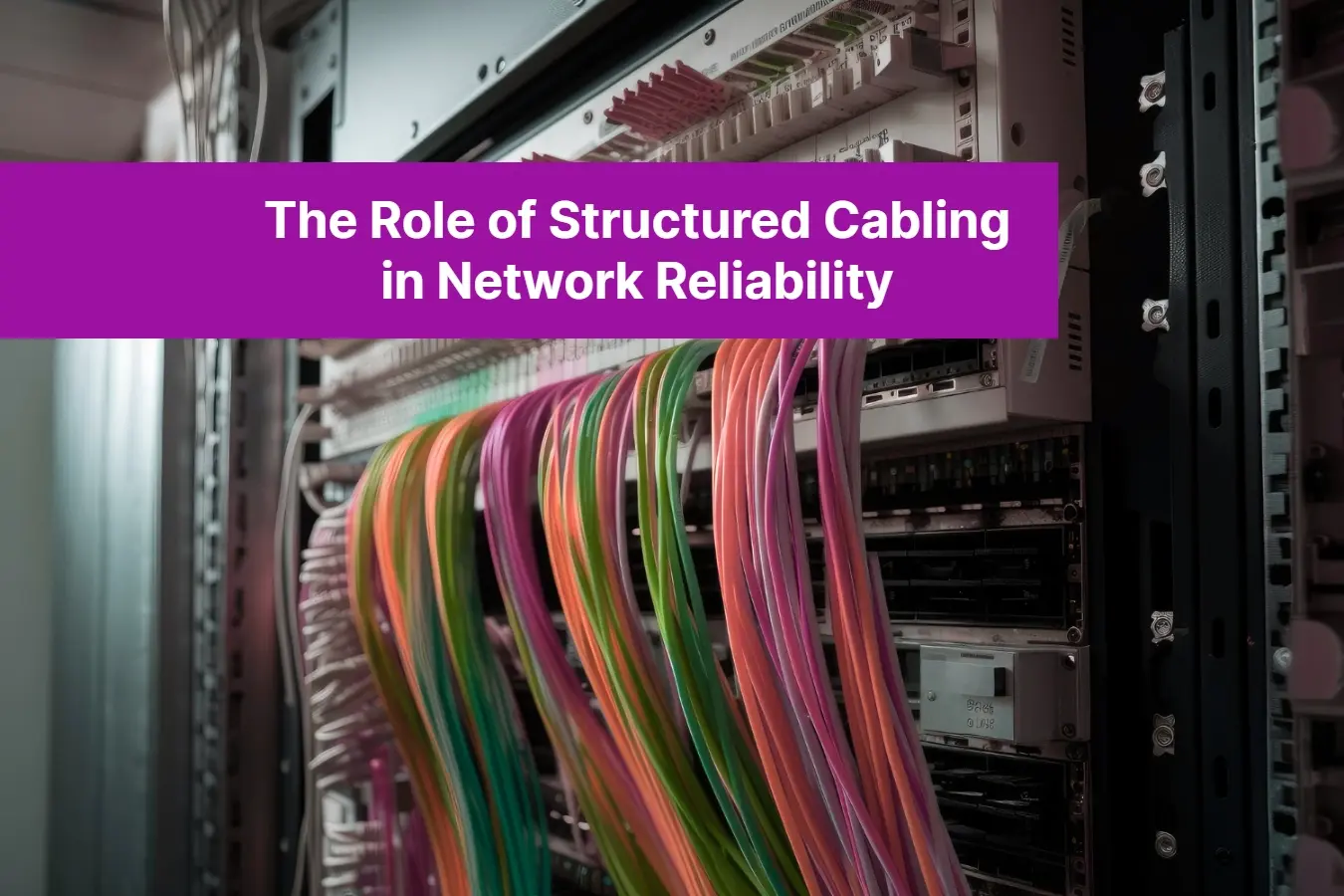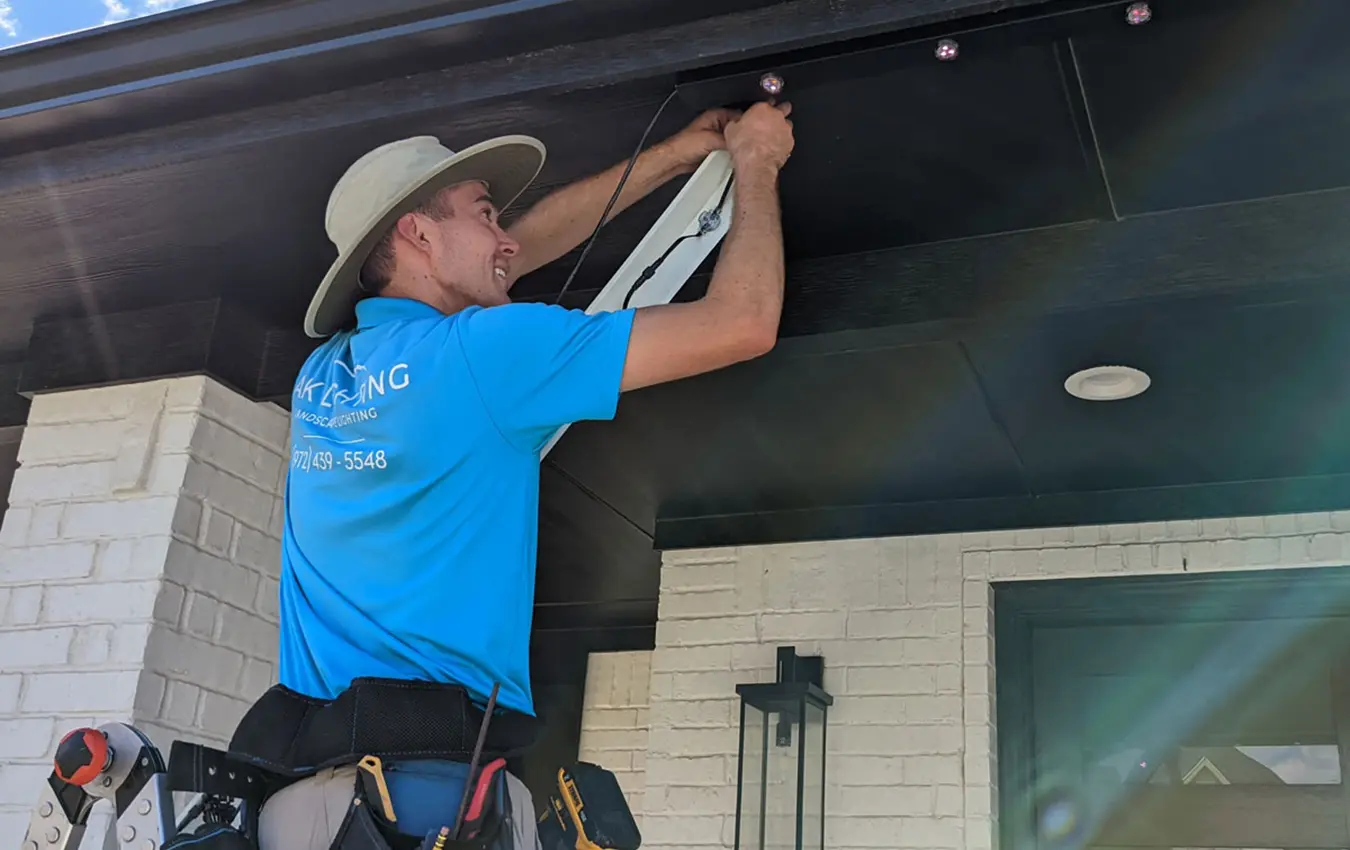In today’s fast-paced and ever-evolving digital landscape, network reliability is paramount. Whether it’s a small business or a large enterprise, a strong foundation is essential for seamless connectivity and optimal performance. Enter structured cabling, the unsung hero behind the scenes. With its meticulous planning and organization, structured cabling provides the backbone of any network infrastructure, ensuring data flows efficiently and securely. It is the invisible force that connects devices, servers, and data centers, allowing for the seamless transfer of information. In this article, we will delve into the crucial role of structured cabling in network reliability. We will explore its benefits, best practices, and the importance of partnering with experts who understand the intricate nuances of this essential component. So, whether you are a business owner, a network administrator, or simply someone fascinated by the world of technology, join us as we unravel the mysteries of structured cabling and discover how it lays the groundwork for a robust and dependable network.
What is structured cabling, and why is it important?
Structured cabling refers to the standardized cabling infrastructure used to connect various devices and equipment within a network. It involves the installation of a comprehensive system of cables, connectors, and related hardware to support data, voice, and video communications. Unlike traditional point-to-point cabling systems, structured cabling follows a well-defined set of standards and specifications. This approach enables flexibility, scalability, and ease of maintenance, making it ideal for organizations of all sizes.
Structured cabling is crucial for network reliability because it establishes a solid foundation that ensures the smooth and uninterrupted flow of data. By providing a structured and organized network infrastructure, it minimizes the risk of downtime, reduces signal interference, and enhances overall network performance. With structured cabling businesses can rely on a stable and dependable network that supports their operations and enables seamless communication.
Another key aspect of structured cabling’s importance is its ability to future-proof a network infrastructure. Technology is constantly evolving, and businesses need to adapt to stay competitive. With structured cabling, organizations can easily incorporate new technologies and devices without the need for major infrastructure changes. This scalability ensures that the network remains efficient and capable of meeting future demands, reducing the need for costly upgrades or replacements.
In summary, structured cabling is important because it provides a standardized, organized, and scalable network infrastructure that enhances reliability, reduces downtime, and future-proofs the network for emerging technologies.
Do you want to hire a professional for installation of structured cabling system for network reliability?
Premier Electrical Services is ready to provide a free consultation on all stages of work and installation of structured cabling system at your request!
Benefits of structured cabling in network reliability
Structured cabling offers numerous benefits that contribute to network reliability. Let’s explore some key advantages.
Flexibility and Scalability
With structured cabling, organizations have the flexibility to add, move, or modify devices and equipment without disrupting the entire network. This level of flexibility enables businesses to adapt to changing needs and scale their operations seamlessly.
Enhanced Performance
Structured cabling minimizes signal interference and ensures optimal data transmission speeds. By eliminating the clutter and confusion often associated with traditional cabling systems, structured cabling provides a clean and efficient network infrastructure, resulting in enhanced overall network performance.
Reduced Downtime
Downtime can be costly for businesses, leading to lost revenue, productivity, and customer dissatisfaction. Structured cabling reduces the risk of downtime by providing a reliable and robust network infrastructure. Its organized and standardized design makes troubleshooting and maintenance easier, allowing for quicker resolution of issues and minimizing network downtime.
Cost Savings
While the initial investment in structured cabling may be higher compared to traditional cabling systems, the long-term cost savings outweigh the upfront expenses. Structured cabling’s scalability and ease of maintenance reduce the need for extensive infrastructure changes, resulting in lower operational expenses over time.
Streamlined Management
With structured cabling, network administration becomes more efficient and streamlined. The organized design makes it easier to locate and manage connections, reducing the time and effort required for routine tasks. This streamlined management not only saves time but also reduces the risk of human errors, further enhancing network reliability.
In conclusion, structured cabling offers a range of benefits that contribute to network reliability. Its flexibility, enhanced performance, reduced downtime, cost savings, and streamlined management make it an essential component of any reliable network infrastructure.
Components of a structured cabling system
A structured cabling system consists of several components that work together to create a reliable and efficient network infrastructure. Let’s take a closer look at each component:
Cables
The cables used in structured cabling are typically made of copper or fiber optic materials. Copper cables, such as Category 6 (Cat 6) or Category 6a (Cat 6a), are commonly used for short to medium distance connections, while fiber optic cables are preferred for longer distances and higher bandwidth requirements. These cables provide the physical connection between devices, ensuring the transfer of data, voice, and video signals.
Connectors
Connectors are used to join cables together or to connect cables to devices and equipment. Common types of connectors include RJ45 connectors for copper cables and LC, SC, or ST connectors for fiber optic cables. These connectors ensure reliable and secure connections, minimizing signal loss and interference.
Patch Panels
Patch panels serve as the central hub for connecting all the cables within a structured cabling system. They provide a convenient and organized way to manage and route cables, making it easier to add, move, or modify connections. Patch panels also act as a point of consolidation, simplifying troubleshooting and maintenance.
Racks and Cabinets
Racks and cabinets are used to house and protect the various components of a structured cabling system. They provide a secure and organized environment for cables, patch panels, switches, and other network equipment. Racks and cabinets also ensure proper ventilation and cable management, reducing the risk of overheating and cable damage.
Switches
Switches are responsible for routing data between devices within a network. They facilitate the transfer of data packets and ensure that they reach their intended destination. Switches play a crucial role in network performance and reliability by managing network traffic and optimizing data flow.
Cable Management
Cable management solutions, such as cable trays, cable ties, and cable labels, are essential for maintaining an organized and tidy cabling infrastructure. These solutions help prevent cable tangling, reduce signal interference, and make it easier to identify and manage connections during maintenance or troubleshooting.
Testing and Certification Tools
Testing and certification tools are used to ensure the performance and compliance of a structured cabling system. These tools measure factors such as cable length, signal quality, and data transfer speeds to verify that the system meets industry standards. Testing and certification are crucial to guaranteeing the reliability and functionality of the network.
By integrating these components into a structured cabling system, organizations can establish a reliable and efficient network infrastructure that supports their communication and data transfer needs.
Planning and designing a structured cabling system
Planning and designing a structured cabling system is a critical step in ensuring its reliability and effectiveness. Here are some key considerations and best practices:
1. Assess Current and Future Needs
Before designing a structured cabling system, it’s important to assess the current and future needs of the organization. This includes evaluating the number of devices, the expected data transfer requirements, and any potential expansion plans. By understanding these needs, you can design a system that is scalable and capable of meeting future demands.
2. Follow Industry Standards
Structured cabling systems are governed by industry standards and guidelines, such as the TIA/EIA-568 series. It’s essential to adhere to these standards to ensure compatibility, interoperability, and reliability. Following industry standards also facilitates future upgrades and modifications.
3. Consider Cable Pathways
Proper cable pathways are crucial for the longevity and performance of a structured cabling system. Cable pathways should be designed to minimize signal interference, avoid physical damage, and allow for future cable additions or changes. Pathways should be well-organized, easily accessible, and include proper support and protection mechanisms.
4. Plan for Redundancy
Redundancy is an important factor in network reliability. When designing a structured cabling system, it’s essential to consider redundancy options to minimize the risk of downtime. This can include redundant cables, switches, power supplies, and backup solutions. Redundancy ensures that the network remains operational even in the event of a component failure.
5. Work with Experienced Professionals
Designing a structured cabling system requires expertise and experience. Partnering with professionals who specialize in structured cabling ensures that the system is properly planned and designed. Professionals can provide valuable insights, recommend the best components and practices, and ensure compliance with industry standards.
By following these best practices and working with experienced professionals, organizations can plan and design a structured cabling system that is reliable, scalable, and future-proof.
Installation and maintenance of structured cabling
The installation and maintenance of a structured cabling system are crucial for its reliability and longevity. Here are some key considerations.
Professional Installation
Structured cabling installation should be performed by trained and certified professionals. Professional installers have the expertise and knowledge to ensure proper cable routing, termination, and testing. This reduces the risk of installation errors and ensures the system’s reliability.
Labeling and Documentation
Proper labeling and documentation are essential for the maintenance and troubleshooting of a structured cabling system. Each cable, connector, and component should be labeled and documented to facilitate identification and management. This documentation should include cable types, lengths, connection points, and any relevant testing or certification information.
Regular Inspections and Maintenance
Regular inspections and maintenance are necessary to identify and address any issues or potential problems. This includes checking for cable damage, loose connections, and signs of wear or degradation. Regular maintenance ensures that the structured cabling system remains in optimal condition, minimizing the risk of downtime or performance issues.
Testing and Certification
Testing and certification are essential to verify the performance and compliance of a structured cabling system. Testing should be performed during installation and periodically thereafter to ensure that the system meets industry standards. Certification provides assurance that the system is reliable and capable of supporting the organization’s communication needs.
Documentation Updates
As changes or modifications are made to the structured cabling system, it’s important to update the documentation accordingly. This includes labeling changes, cable routing updates, and any additional components or connections. Accurate documentation ensures that future maintenance or troubleshooting efforts are efficient and effective.
By prioritizing professional installation, proper labeling and documentation, regular inspections and maintenance, testing and certification, and accurate documentation updates, organizations can ensure the reliability and longevity of their structured cabling system.
Common mistakes to avoid in structured cabling
While structured cabling offers numerous benefits, certain mistakes can compromise its reliability and effectiveness. Here are some common mistakes to avoid.
Poor Cable Management
Neglecting proper cable management can lead to signal interference, cable damage, and difficulty in troubleshooting or maintenance. It’s essential to invest in cable management solutions, such as cable trays, ties, and labels, to maintain an organized and tidy cabling infrastructure.
Ignoring Future Needs
Failing to consider future needs and scalability can result in costly infrastructure changes or upgrades down the line. It’s important to design a structured cabling system that can adapt to evolving technologies and accommodate future growth.
Inadequate Testing and Certification
Skipping or neglecting the testing and certification process can lead to hidden issues or non-compliance with industry standards. Thorough testing and certification ensure that the structured cabling system meets performance and reliability requirements.
Lack of Documentation
Inadequate labeling and documentation make it difficult to manage, troubleshoot, or modify the structured cabling system. Proper documentation is essential for efficiency, accuracy, and future maintenance efforts.
Improper Installation
Incorrect installation practices, such as improper cable routing, termination, or grounding, can result in performance issues, signal loss, or physical damage. Professional installation by trained and certified technicians is crucial to avoid such issues.
By avoiding these common mistakes and adhering to best practices, organizations can maximize the reliability and effectiveness of their structured cabling system.
Future-proofing your network with structured cabling
As technology continues to evolve at a rapid pace, future-proofing your network is essential to stay competitive and efficient. Structured cabling plays a crucial role in future-proofing by providing a scalable and adaptable network infrastructure. Here’s how structured cabling enables future-proofing:
1. Scalability
Structured cabling allows for easy scalability, accommodating future growth and technological advancements. With the ability to add, move, or modify connections without major infrastructure changes, organizations can seamlessly integrate new devices, technologies, and applications into their network.
2. Compatibility
Structured cabling follows industry standards and specifications, ensuring compatibility with various devices and technologies. This compatibility enables organizations to adopt new technologies and equipment without compatibility issues or major system changes.
3. Bandwidth Requirements
As data demands continue to increase, structured cabling provides the necessary bandwidth to support high-speed data transfer and emerging technologies. With options for fiber optic cables and higher category copper cables, structured cabling can meet the bandwidth requirements of future technologies.
4. Reliability and Performance
Future-proofing requires a reliable and high-performing network infrastructure. Structured cabling’s organized and standardized design minimizes signal interference, enhances data transfer speeds, and reduces downtime, ensuring the network remains efficient and dependable.
5. Longevity
By investing in a well-designed and properly installed structured cabling system, organizations can expect a longer lifespan for their network infrastructure. This longevity reduces the need for frequent upgrades or replacements, resulting in cost savings and stability.
Incorporating structured cabling into your network infrastructure is an effective way to future-proof your organization. By providing scalability, compatibility, sufficient bandwidth, reliability, and longevity, structured cabling ensures that your network remains efficient and adaptable to future technological advancements.
Structured cabling vs. traditional cabling: a comparison
When it comes to network infrastructure, structured cabling offers significant advantages over traditional cabling systems. Let’s compare the two approaches:
Organization and Flexibility
Traditional cabling systems often involve a point-to-point approach, where cables are directly connected between devices. This can result in a cluttered and disorganized network infrastructure. Structured cabling, on the other hand, follows a well-organized and standardized approach, enabling easy management, scalability, and flexibility.
Ease of Maintenance
Troubleshooting and maintenance are much simpler with structured cabling. With a point-to-point approach, identifying and resolving issues can be time-consuming and challenging. Structured cabling systems, however, are designed with clear labeling and organization, making it easy to identify and isolate problems. Additionally, the standardized approach of structured cabling means that adding or removing devices is straightforward and does not require significant reconfiguration. This flexibility allows businesses to adapt to changing needs quickly and efficiently. Furthermore, structured cabling systems are less prone to downtime due to their organized design, resulting in improved productivity and reduced costs associated with network disruptions. Overall, while traditional cabling systems may seem simpler at first glance, the benefits of structured cabling in terms of organization, flexibility, and ease of maintenance make it a superior choice for businesses looking for a reliable network infrastructure.
Conclusion: Structured Cabling for a Network Reliability
In today’s fast-paced, tech-driven world, where information is exchanged at the click of a button and delivery times get shorter by the second, constant connectivity is more important than it has ever been before. And that means that network reliability and speed are both essential for keeping pace and getting ahead in today’s business climate. But how can companies ensure network reliability? Enter structured cabling, a crucial technology that streamlines communications and makes data transfer fast, efficient, and more secure. The role of structured cabling in network reliability cannot be ignored. It is the foundation of any network, providing the essential foundation for networks to operate with optimal performance. Every IT professional should be aware of how structured cabling works, and make sure its role in the network is fully understood, and otherwise poor implementation could lead to inadequate performance and even downtime. With that said, reliable structured cabling is vital to a business’ success—and it’s up to IT professionals to ensure that their network can play nice with their chosen provider.
Do you need to make your network infrastructure more reliable?
Structured cabling decreases downtime and facilitates future system changes, which improves network performance and reliability while saving time and money. In response to your request, The Premier Electrical Services is prepared to offer a free consultation!
Check out the latest news:
- 5 Smart Home Upgrades to Increase Property Value in Fort Lauderdale
- Common Lighting Issues and How Professional Repairs Can Save You Money
- Smart Lighting Solutions for Energy Efficiency in Fort Lauderdale Homes
- The Latest Trends in Outdoor Lighting for 2024: Illuminating the Future
- Upgrading Your Home’s Electrical Panel: What You Need to Know






